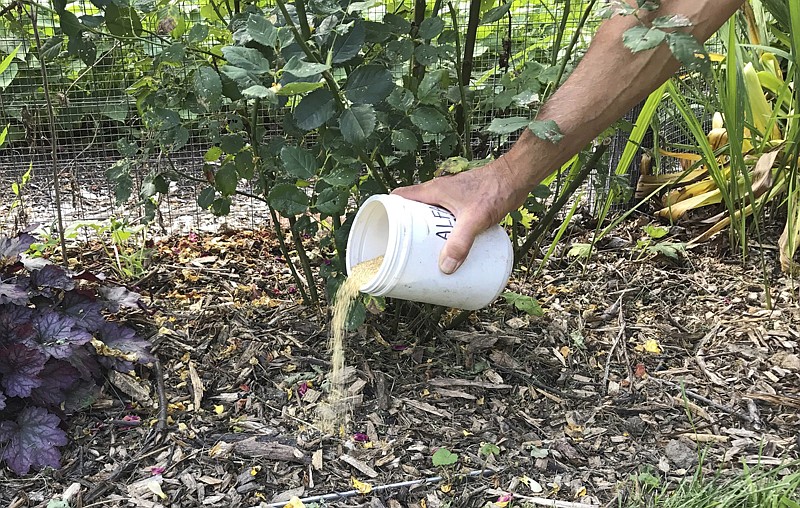Last call for fertilizer!
Soon after midsummer, the growth of perennial plants starts winding down. They begin to squirrel away food energy in stems and roots, and stems start to toughen up in preparation for the colder months ahead. Fertilizing late in the season keeps plants youthfully exuberant, but they'll pay for those excesses with cold damage once the weather turns chilly.
Fertilizer may not be needed at all in summer, but if it is, know what and how much you're feeding, and do it now.
MAJOR PLANT FOODS
The "big three" foods that plants get from the soil are nitrogen, phosphorus and potassium. These nutrients are represented by the three numbers you see most prominently displayed on fertilizer bags: 10-10-10, 5-10-5 and the like. The numbers represent nutrient concentrations of, respectively, nitrogen, phosphorus and potassium, more generally known as N, P and K. (Kalium is Latin for potassium.)
The application rate for any fertilizer must be adjusted according to how concentrated it is. Filling your salad bowl with chocolate bars instead of salad would be as foolish for you as spreading a concentrated fertilizer like ammonium nitrate (34 percent nitrogen) at the same rate as a less concentrated one like cottonseed meal (7 percent nitrogen) would be for your garden.
One way to know how much of a particular fertilizer to use is by just reading the label. A general recommendation is usually offered.
FERTILIZER MATH
Sometimes, though, you know how much food your plants need, so you must tailor your application rate according to what fertilizer you have on hand. You could use any fertilizer that supplies the particular nutrient for which your plant hungers.
For instance, suppose a soil test indicates that your rose garden needs two-tenths of a pound of nitrogen per hundred square feet. This recommendation is in terms of nitrogen itself-so-called elemental nitrogen-rather than for any particular nitrogen fertilizer. Dividing the fertilizer's concentration of a particular nutrient by the needed amount of the elemental nutrient gives the amount of actual fertilizer to apply.
So, a 10 percent nitrogen fertilizer divided by two-tenths of a pound of elemental nitrogen per hundred square feet gives an application rate of 2 pounds of this fertilizer per hundred square feet. A bag of 5-10-10 would call for twice this amount, or 4 pounds per hundred square feet.
ORGANIC IS EASY
Cautions against fertilizing too late in the growing season don't apply to fertilizing with compost. Compost oozes its goodness into the soil slowly and in sync with the weather and plant growth, so use it wherever and whenever it is available. It's relatively low in nutrients (yet rich in a lot of other good stuff), but a 1-inch depth spread over the ground provides all the nutrients that any plant would need for a whole year.

